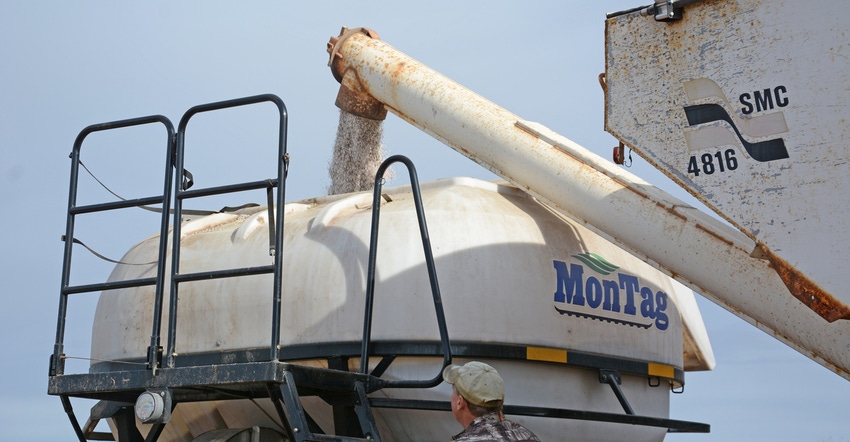September 23, 2021

The Minnesota Department of Agriculture’s Pesticide and Fertilizer Management division staff are reminding landowners that application of nitrogen fertilizer in the fall and on frozen soil is restricted in areas vulnerable to groundwater contamination and in Drinking Water Supply Management Areas (DWSMAs) with elevated nitrate levels.
An area with vulnerable groundwater is an area where nitrate can move easily through soil and into groundwater. These areas include coarse-textured soil, karst geology and soils with shallow bedrock.
An interactive map showing where fall fertilizer restrictions apply, as well as a list of exceptions to the fall fertilizer restrictions, are online at mda.state.mn.us/nfr.
Fall nitrogen fertilizer restrictions are part of the Groundwater Protection Rule. The goal of the rule is to minimize potential sources of nitrate pollution to the state’s groundwater and to protect drinking water.
The rule went into effect in June 2019, and the fall fertilizer restrictions started in September 2020. Fall fertilizer restrictions begin every year on Sept. 1.
Recent MDA activities to implement the Groundwater Protection Rule include outreach along with convening local advisory teams in DWSMAs with elevated nitrate levels.
For more information in southeast Minnesota, contact Larry Gunderson at 651-201-6168 or [email protected]; in the central sands and southwest regions of the state, contact Luke Stuewe at 218-850-9454 or [email protected].
In other regions
In other areas of the state where fall nitrogen fertilizer application is allowed, the MDA advises farmers and commercial applicators to check soil temperatures and wait for cooler conditions. Research shows that delaying fall application of anhydrous ammonia and urea fertilizer, as well as manure, until the average soil temperatures reach 50 degrees F or cooler, helps prevent nitrogen loss, protects water quality, and ensures more nitrogen will be available for next season’s crop.
To assist tracking soil temperature, the MDA provides real-time, 6-inch soil temperatures at 25 locations across the state. In addition, the MDA provides links to soil temperature from the University of Minnesota research stations and the North Dakota Ag Weather Network weather stations. View the interactive map to find the current 6-inch soil temperature and the past week’s history.
Although the soil temperature network was established to support application of nitrogen fertilizer, it is equally useful for those applying manure in the fall. University of Minnesota Extension recommends the same temperature delay (6-inch soil temperature below 50 degrees) to prevent leaching losses. Research from the University of Minnesota showed liquid dairy and hog manures injected in November produced yields 10 bushels per acre higher than manures injected in September and October.
For more information on the 6-inch Soil Temperature Network visit mda.state.mn.us/soiltemp.
Source: Pesticide & Fertilizer Management Division Update, September 2021, and the Minnesota Department of Agriculture, which are solely responsible for the information provided and is wholly owned by the source. Informa Business Media and all of its subsidiaries are not responsible for any of the content contained in this information asset.
You May Also Like




